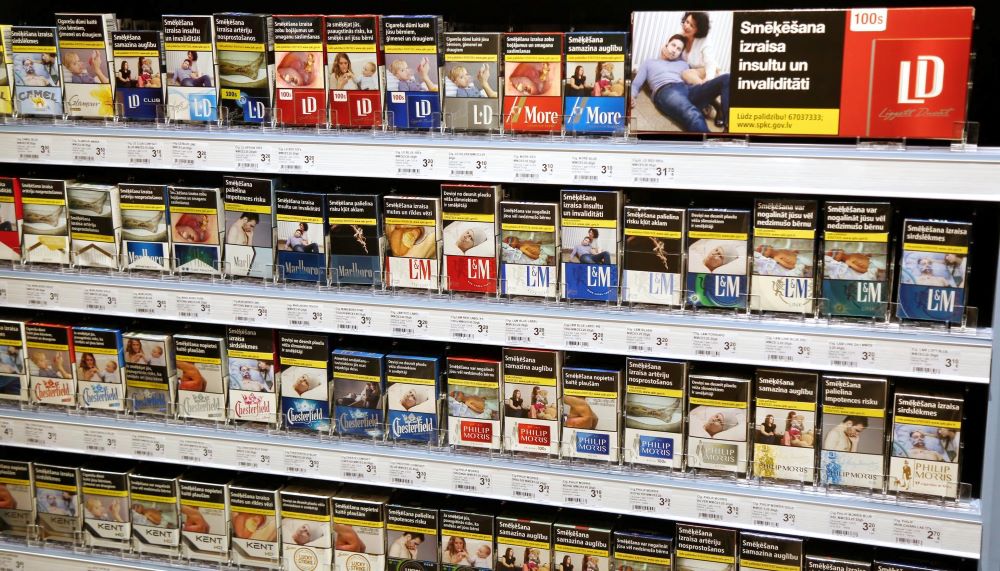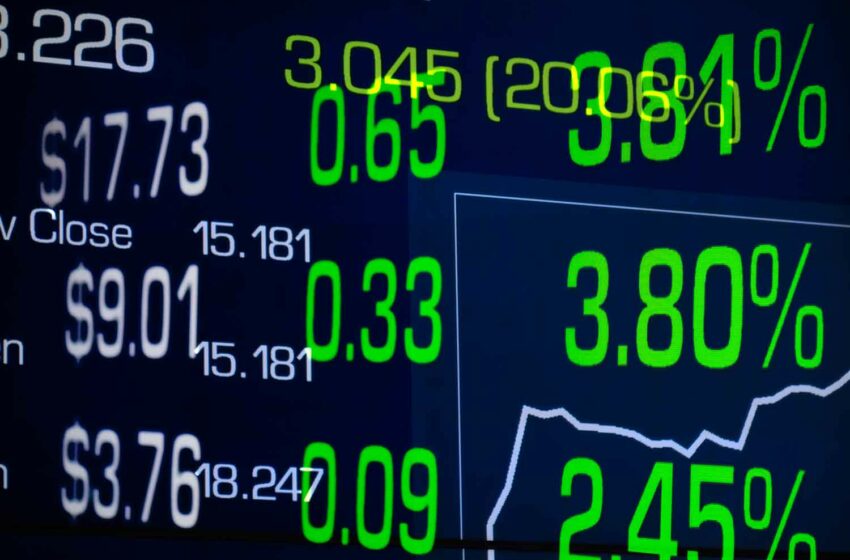
New taxes and regulations are reshaping the tobacco markets in the Baltic countries.
By Vladislav Vorotnikov
Following the Europe-wide trend, the Baltic countries are reshaping the tobacco market with new taxes and health regulations. These efforts promise dramatic changes to the industry, which is already experiencing shifts due to changes in consumer demand and demographic factors while dealing with the large-scale counterfeit problem.
The Baltic region comprises three post-Soviet republics: Latvia, Lithuania and Estonia. Over the past decades, all three countries have been facing similar trends in tobacco consumption, including waning demand for cigarettes.
“Within tobacco in the Baltic states, cigarettes are expected to continue struggling to maintain demand in 2024,” Bogdanas Poletajevas, senior analyst at Euromonitor International, told Tobacco Reporter.
In 2023, around 1.9 billion cigarettes were consumed in Latvia, 2.47 billion in Lithuania and 1.29 billion in Estonia, KMPG said in a recent report.
In recent years, cigarette consumption followed a steady downward trend, the company noted. For example, in 2020, cigarette consumption in Latvia stood at 2.1 billion, in Lithuania at 2.88 billion and in Estonia at around 1.5 billion.
A steady depopulation process is one of the factors driving down cigarette consumption across the region. As of 2023, Latvia’s population was estimated at 1.8 million, Lithuania’s at 2.6 million and Estonia’s at 1.2 million. Compared with 2015, when the region boasted 6.2 million citizens, the number of residents dropped by nearly 20 percent.
Several factors are in play, including weak demography and continuing emigration as a large number of young people seek job opportunities in Western European countries.
In addition, the Baltic region is influenced by a general trend of cigarettes gradually losing their popularity in the developed countries.
“Smoking prevalence in terms of cigarettes continues a worldwide trend of gradual decrease,” Poletajevas said. “This was underpinned by heightened health concerns as well as an increase in excise taxes and high inflationary pressure on energy and transportation costs, making cigarettes more expensive.”
However, in the past few years, the cigarette market benefited from a surge in political tensions.
In 2023, the share of smokers in Latvia slightly increased, LSM, a local news outlet, reported without providing concrete figures. To some extent, the tendency is attributed to rising stress and anxiety in the context of the Ukrainian conflict.
“Increased stress levels can drive people to smoke. The geopolitical situation, problems at work, the political and economic situation in the country and possibly price increases [are among contributing factors]. During periods of increased stress, people start smoking to feel a sense of calm,” Agnese Ritene, president of the Association of Pharmacies of Latvia, told LSM.
Indeed, opinion polls in the past couple of years indicate elevated anxiety levels among the citizens of Baltic countries, which border Russia and Belarus in the east.
The rise in the number of smokers against this background is tangible. For example, in the age category between 15 and 24, the number of smokers spiked by 18 percent in the past two years, according to the Latvian Center for Disease Control and Prevention.
Transition in Progress
However, market players also indicate that though the number of smokers in the region is on the rise, cigarettes are gradually losing ground to novel tobacco products.
Poletajevas estimated that regular cigarettes continued to lose retail volume share to perceived less harmful alternatives like e-cigarettes and heated-tobacco products.
“This trend raises questions about whether the overall popularity of smoking is genuinely decreasing or if consumers are merely transitioning to different forms of tobacco consumption,” Poletajevas said.
“We have noticed that people are smoking classic cigarettes less. The demand for alternatives to cigarettes, such as electronic cigarettes, heated tobacco and nicotine pouches, has increased,” Madara Apsalone, a spokesperson for Philip Morris Latvia, observed during a press conference in Riga.
The number of e-cigarette smokers in Latvia jumped from 1 percent to 8 percent, Una Martinsone, a public health analyst with the Disease Control and Prevention Center, reported. The number of women who vape shot up from 1 percent in 2020 to nearly 13 percent in 2022, she added.
Euromonitor International estimated that the Baltic region’s cigarette market is divided among three leading players: Philip Morris International, BAT and Japan Tobacco International.
“While cumulatively they are losing volume in the cigarettes category, major investments are focused on alternative nicotine consumption categories like heated tobacco,” Poletajevas said.
“The leading player in new categories remains Philip Morris as the pioneer; however, BAT has taken [a] more aggressive strategy pricing-wise, which helped to cannibalize [a] substantial part of the market. The latest entrant into the Baltic markets is JTI, albeit [the company] still holds a marginal share and will need time to consolidate,” Poletajevas said.
On the European Frontline
The Baltic region also suffers from an inflow of counterfeit cigarettes, primarily delivered by smugglers from Belarus.
As estimated by KPMG, last year, 260 million cigarettes sold in Latvia were illegal compared to 430 million in Lithuania and 140 million in Estonia.
Lithuania’s state budget lost nearly €75 million ($82.31 million) as a result of the illegal market, the analyst calculated. Nearly 89 percent of all counterfeit cigarettes to the country were delivered from Belarus.
In Estonia, the budget losses were nearly €30 million, with 57 percent of the illicit volumes coming from Belarus, the KPMG office noted. Latvia, in turn, lost €43 million, with 61.5 percent of smuggling also coming from Belarus.
According to PMI’s Apsalone, although the volume of cigarette smuggling in Latvia has decreased in recent years, it still significantly exceeds the EU average. “Smuggled cigarettes in Latvia are still mainly imported from Belarus, even though the border with it is tightly controlled after the start of Russia’s war against Ukraine,” Apsalone indicated.
Occasional reports indicate that some cigarettes smuggled to the Baltic region from Belarus end up in neighboring EU states, including Poland and Germany.
KPMG analysts indicated that the general economic situation is tightly linked to the public’s tolerance of smuggling. When the population becomes wealthier, people grow reluctant to buy cigarettes, understanding that they are counterfeit or smuggled.
However, this trend goes in both directions; when the economic situation deteriorates, illegal traders take advantage of that situation, KPMG indicated, citing the turbulence of the past few years when the energy crisis and rapid inflation took a heavy toll on the Baltic citizens’ purchasing power.
Legal Initiatives Under Scrutiny
The shadow segment of the cigarette market is a multifactorial phenomenon that requires the authorities to pursue a well-thought-out excise policy.
“The legislative direction across all the Baltic states remains united,” Poletajevas said, adding that excise tax increase remains the main method of deterring tobacco consumption.
However, he noted that regulations on new categories lag behind those for traditional tobacco products, hence offering cheaper alternatives to traditional products.
This is expected to change in the coming years as plans are set for a steady excise increase for heated-tobacco and vapor categories in the region. Poletajevas said that further talks are being held among lawmakers on disposable vapor products and their risks for youth consumption and sustainability concerns.
“Although loopholes may exist initially, tighter regulations are expected, potentially impacting the flexibility enjoyed by major players,” Poletajevas stated.
Latvia is at the forefront of fighting against tobacco consumption in the Baltic region.
Under a bill recently passed by Latvian Saimas, young people under 20 will be prohibited from smoking, buying or selling tobacco products from Jan. 1, 2025. These restrictions also apply to tobacco substitute products, herbal smoking products, electronic smoking devices and refillable containers for them.
Other countries in the region also mull various restrictions on tobacco consumption.
In Lithuania, lawmakers are considering a full ban on e-cigarettes. As explained by Antanas Matulas, chairman of the Parliamentary Committee on Health, earlier in 2024, the authorities are discouraged by persisting fraud on the market. She explained that some tastes and flavors were banned in the country as a part of the anti-smoking campaign, but the companies engaged in this segment refuse to obey. They repacked the banned liquids, put new labels and brought them back on the market, Matulas said.
However, Matulas admitted that there would not be easy answers.
The idea of banning e-cigarettes faces firm opposition in Lithuanian society as analysts warn that the move would give a powerful impetus for growth to the illegal segment and push a part of consumers back toward conventional tobacco products.











